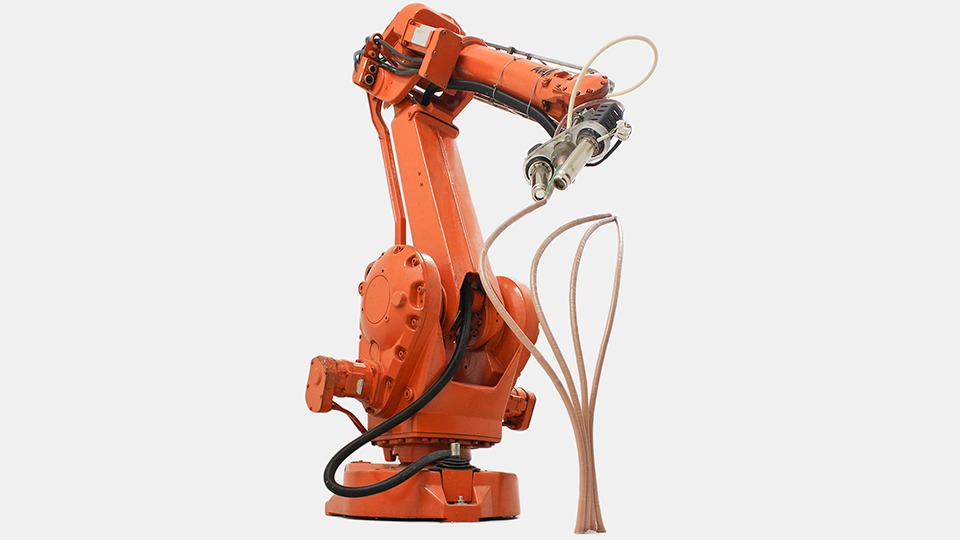We’ve seen some killer 3D robot arm printing come out of the Institute for Advanced Architecture of Catalonia (IAAC) before in both clay and sand with others exploring recycled plastic, but this new collaboration between researcher, Petr Novikov, and architect, Saša Jokić, is making the print and the printer an absolute art form. Mataerial is a project that explores a new printing method, or rather a new material, that doesn’t require support structure, can be printed into 3D forms instead of 2D layers and is even capable of being programmed to print in full-color.
Form over flatness
Created during their internship at Joris Laarman Lab, Petr, Saša and a team of others have brought the focus off the print bed and into the print space. The idea is somewhat similar to the 3Doodler, handheld 3D print gun, sized up a few notches using an ABB IRB2400 M96, S4 industrial robot system. (These robots can be picked up used/refurbished for around $10,000-$13,000 US.) The CAD geometry is loaded and the two materials separated into containers at the top of the arm are pushed through a mixer and out the nozzle. It still needs a print bed, inasmuch as it needs a starting attachment point, but that attach point can be on a horizontal, vertical or inclined surface with no required preparation for adhesion.
This patent-pending method allows for creating 3D objects on any given working surface independently of its inclination and smoothness, and without a need of additional support structures. Conventional methods of additive manufacturing have been affected both by gravity and printing environment: creation of 3D objects on irregular, or non-horizontal surfaces has so far been treated as impossible . By using innovative extrusion technology we are now able to neutralize the effect of gravity during the course of the printing process. This method gives us a flexibility to create truly natural objects by making 3D curves instead of 2D layers. Unlike 2D layers that are ignorant to the structure of the object, the 3D curves can follow exact stress lines of a custom shape. Finally, our new out of the box printing method can help manufacture structures of almost any size and shape. – Mataerial
I love the application this has for both larger and more complicated structures as well as the limits to layered horizontal printing it addresses, namely overhangs and z-axis structural weakness. There are other issues that replace those of course–overall structural weakness and stability–but this is an interesting approach to creating structures that could be reinforced prior to, during or even after a print. We’ve seen 3D printing move from contained areas to open spaces, with delta desktops units increasing the build area. Will we see desktop robot arm printers next? You could start with an OWI Robot Arm and… hmmmm. Video of the Mataerial robot below with a couple GoPro first-person perspective segments to really put you in the anti-gravity mood.
Mataerial Introduction from Mataerial on Vimeo.
















